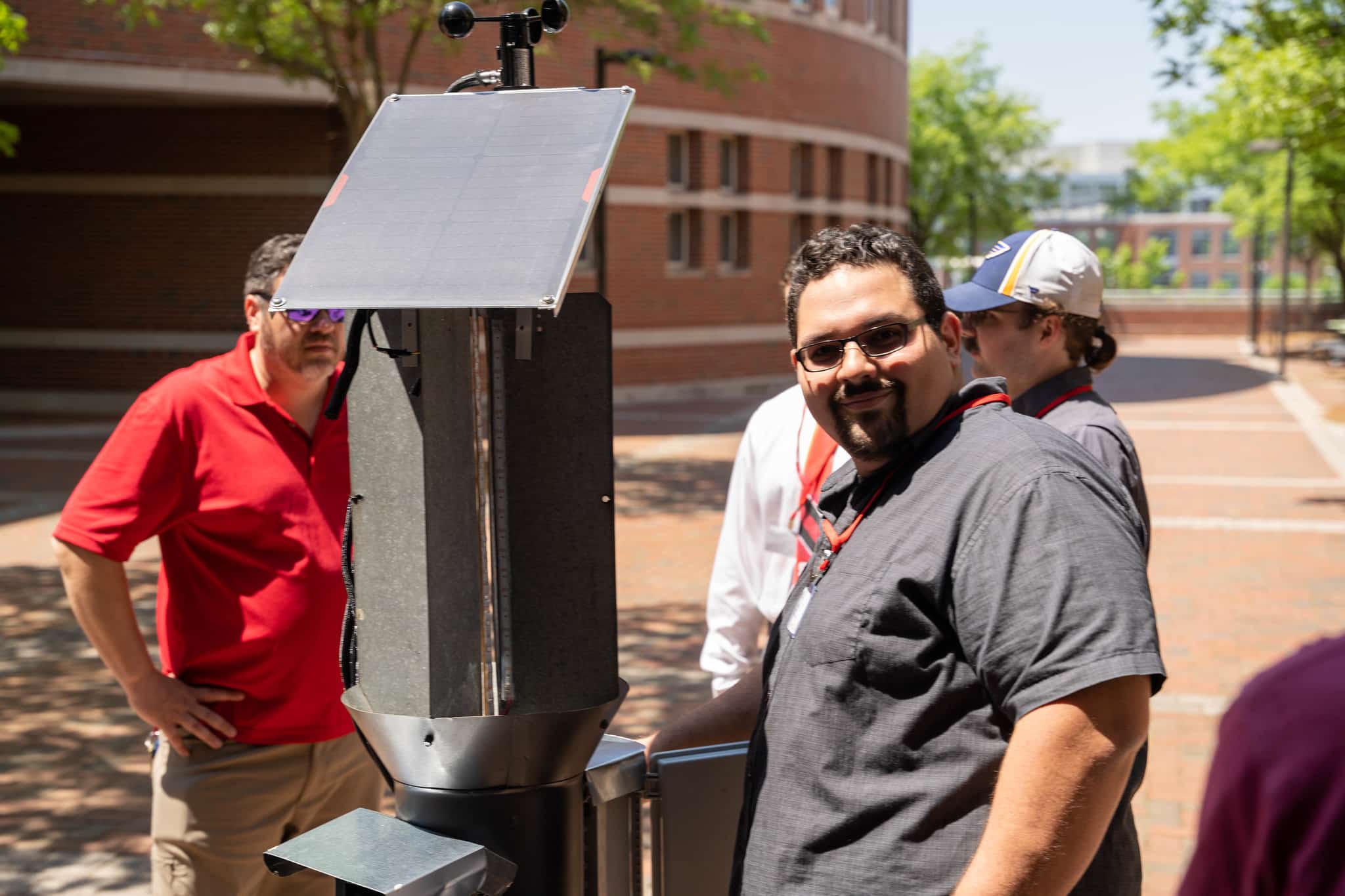
North Carolina State University (NC State) has three community-focused projects funded through EPICS in IEEE. EPICS in IEEE is thrilled to be partnering with the ECE Senior Design team to support these projects. Recently EPICS and IEEE and the local IEEE Eastern Carolina Section had the chance to hear from the student teams on what they have been working on over the last two semesters. It was a great opportunity for the students to present their projects and for them to answer questions from the industry members who were part of the meeting. Below is a snapshot of what the students shared.
Two teams that are working on the Wheelchair Electric Assist project, part of the EPICS in IEEE Access and Abilities Competition, presented their project. The need for the project is that caretakers with decreased mobility are faced with difficulty when pushing transport wheelchairs, especially up ramps. The key requirements for the solution are to be inexpensive, lightweight, and removable. Through the push of a button, the user can turn on the system and easily change how much electric assistance they get. The key end users for this solution are caretakers with impaired mobility who are caring for wheelchair users. “The project fills a gap between manual and full electric chairs and really pushes the students to very carefully balance the project requirements, the solution needs to be carefully designed to meet requirements that are pushing from multiple directions. It is a very difficult project to meet all of the constraints,” says Jeremy Edmondson, Associate Director ECE Senior Design.
The team set up several user testing sessions, over the course of the two projects, with Marie Dagger who is an Aging Transitions Occupational Therapist working at the Seymour Senior Center in Chapel Hill, NC. The user testing for the project consisted of allowing Marie and other practicing therapists to operate the chair with the drive systems attached. In addition, some of the elderly individuals that were present at the time were able to use the chair as a passenger. This testing allowed the participants to provide useful feedback on improvements that could be made to our design
Since receiving the feedback, the second team has taken over and will be making improvements to the design to help address the following issues: the components in the bag are tight due to wiring, motor drivers are economical, but at times have had issues, hub-motors generate more noise and shake to the chair than anticipated and the connectors used are sensitive and unreliable. The team plans to address these challenges by using PCB rather than Protoboard, changing out connectors, simplifying wiring, fixing the wheels mounting by changing the axle, and further consideration of regenerative braking. The second team consisted of graduate students from Industrial Design to help with the user interface.
View the project video below!
The second project that the students presented was the Light Trap Systems for Lepidopteran Pest Monitoring with a targeted end user of Corn/Soybean Farmers. Corn earworm moths represent one of the greatest dangers to corn, soybean, and cotton farmers in NC and the US. The team was tasked with designing a retrofit for NCSU’s 16 aging light-based moth traps, which monitor populations and provide valuable data to farmers. Using UV LEDs, they achieved trap performance equivalent to current fluorescent lamps, ensuring 40 years of stored data is still viable while increasing longevity and power efficiency.
The team’s key requirements were that there be no change in effectiveness, the moth traps had to be self-sufficient, provide sensor data and be easy to produce and install. To address these requirements, a solar panel and battery allow for fully remote operation, and a suite of environmental sensors provides weather data to aid research. An IR counter mounted internally automatically logs moths entering the trap, eliminating the need to count hundreds of moths manually. The team also added a weather station on the trap to log and keep track of current local weather (temperature, humidity, wind speed etc.)
The project has been successful thus far but there are still improvements that can be made. Rachana A Gupta, Ph.D., Teaching Professor and Director of ECE Senior Design at NC State mentioned “We do foresee some more technical problems: One, the trap is an outdoor device, and the electronic components inside the device can get significantly hot. Two, it was discovered during field testing that traditional traps have a significant problem with water leakage and the electronic components installed inside the trap have to be protected from water getting into them. We think more efforts must be spent on weatherproofing the system and designing and testing a temperature ventilation system.
EPICS in IEEE is proud to be supporting these projects from NC State and is looking forward to end result as these students navigate the design challenges ahead. “The collaboration with NC State University gives EPICS in IEEE the opportunity to work on local community issues over a longer period of time. Students from the following years have been able to take over projects and improvise on them to make a better product overall. It’s with partnerships such as these that EPICS in IEEE envisions a better world while empowering students,” said Samarth Deo, Past EPICS in IEEE chair and current committee member. “The committee would also like to thank the IEEE Eastern Carolina Section for assisting with the distribution of the project funds.”
The grants for the projects above are made possible through the partnership with the IEEE Foundation, and the generous donors who support EPICS in IEEE. If you are interested in supporting future projects, you may donate here. Visit the EPICS in IEEE site to learn about other projects and future proposal deadlines.